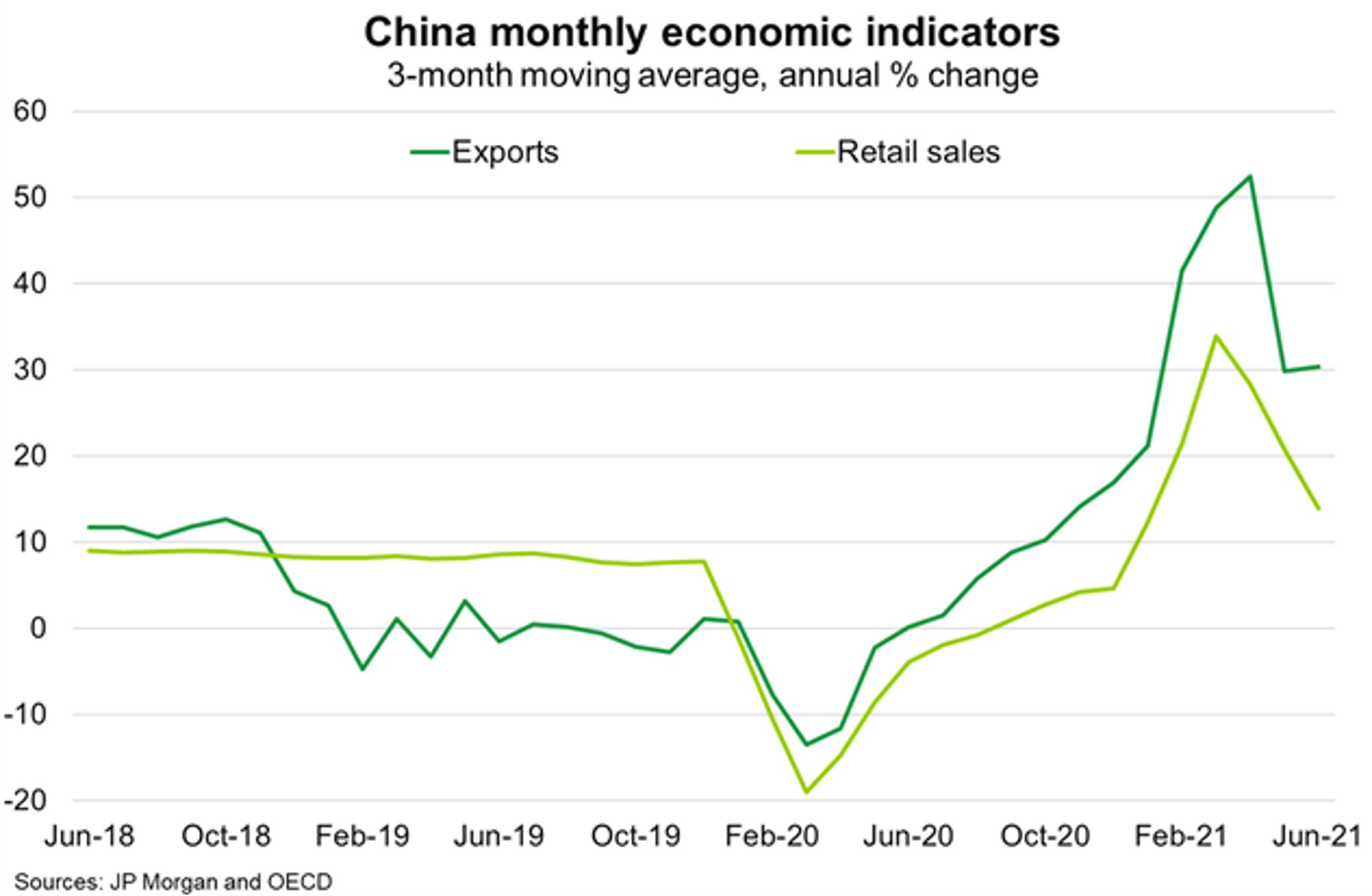China—Slowing domestic economy prompts fresh stimulus
China’s economic recovery from the COVID-19 pandemic has slowed from the initial robust rebound. Although low base effects are still affecting growth numbers, real GDP expanded at a slower 7.9% year on year in Q2, down sharply from 18.3% in Q1. To support the recovery, authorities announced a 50-basis point cut in banks’ reserve requirement ratio (RRR) from mid-July 2021, reducing the amount of cash that banks are forced to hold as reserves. This should allow banks to reduce their lending rates and spur lending, particularly to small and medium-sized enterprises (SMEs). The RRR cut should inject CNY1 trillion (about US$155 billion, or 6% of GDP) of extra liquidity into the banking system.
Efforts to support SMEs—which generate a significant share of jobs—should in turn support household consumption that has lagged China’s recovery and is important to the authorities’ goal of lifting domestic demand. The economy remains disproportionately reliant on external demand, as export growth continues to outstrip retail sales (Chart). But manufacturing exports are likely to face mounting pressure from higher materials costs for factories (driven by surging commodity prices), a global semiconductor shortage, logistics bottlenecks, higher freight costs and tighter environmental restrictions on heavy industry. Moreover, sporadic outbreaks of COVID-19, lower than normal domestic tourism during June’s Dragon Boat Festival and slowing auto sales suggests underlying weakness in consumer confidence.
The RRR cut highlights a shift in policymakers’ focus to boosting growth over deleveraging. But authorities have indicated they will refrain from implementing large stimulus measures, wary of stoking financial risks. China’s economy-wide debt burden reached 320% of GDP in Q1 and the recent rise in corporate bond defaults, particularly among state-owned enterprises, underscores elevated debt risks as the economy slows.

